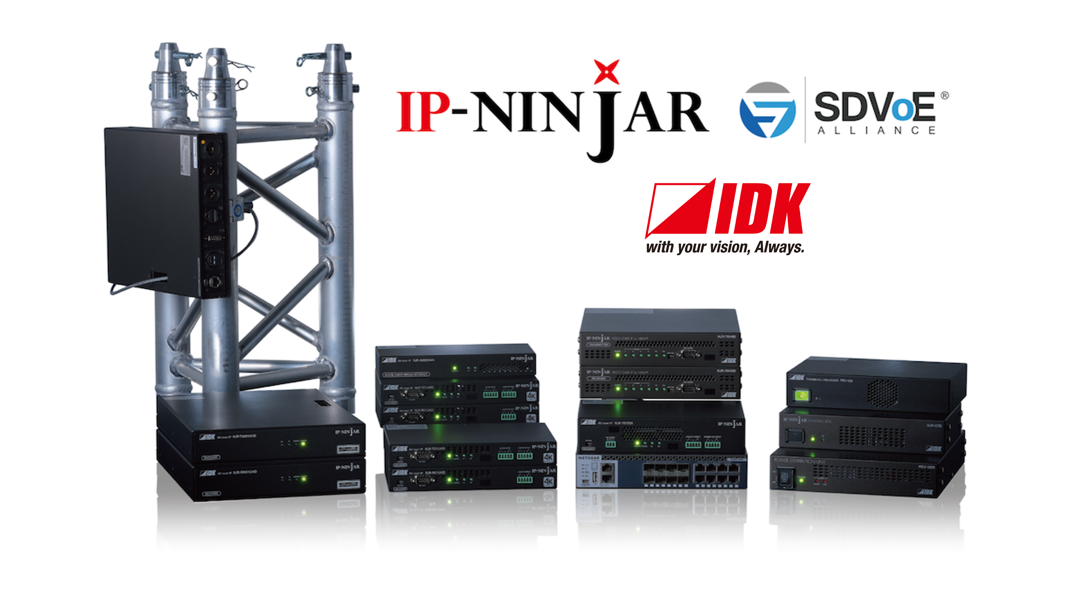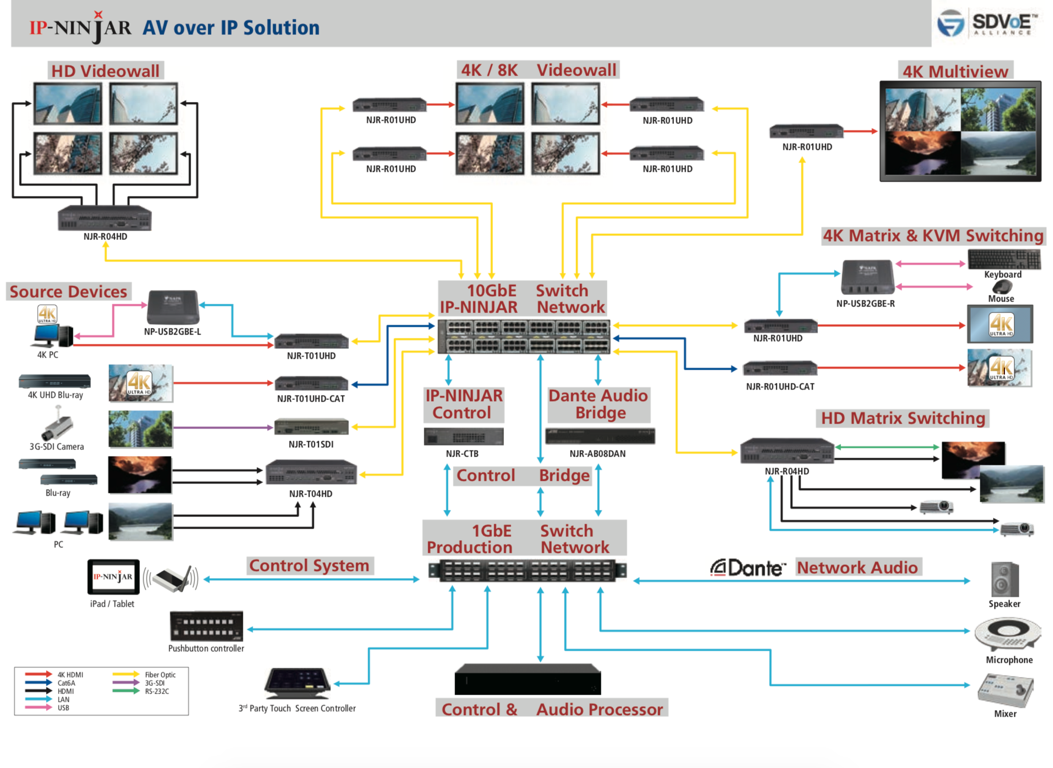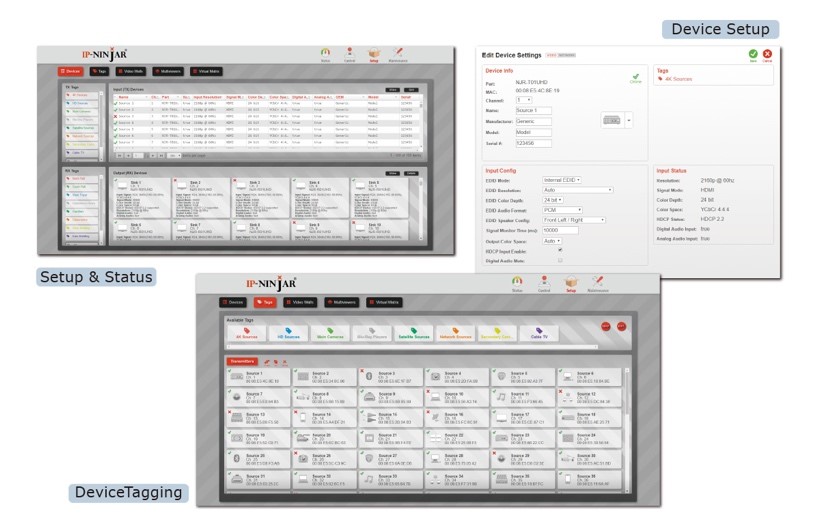SDVoE: a Tech Manager’s Dream
As the tech manager at your facility, you have the responsibility of overseeing and maintaining all the AV technology on your campus – for classrooms, conference rooms, or even digital signage. This could mean overseeing a lot of different equipment, from large fixed matrix switchers to HDBaseT extenders routing video all from a central hub. When it comes to upgrading, it usually requires throwing out expensive matrix switches and replacing them with newer equally expensive matrix switches, only to gain a few new features. What if instead of replacing your current matrix system, you could opt for a solution that not only gave you more useful features and better user experiences, but also was more cost effective, scalable, and flexible? No need to pinch yourself, this is isn’t a dream, it’s SDVoE.
 SDVoE or “Software Defined Video over Ethernet” was designed to identically match the raw performance of a matrix switch, giving users the video quality and experience they are familiar with. Since a fixed frame matrix switch has no ability to grow as your demand changes over time, you’re often stuck with just the 16×16 or 32×32 frame that was originally installed. However, with a solution like IDK’s IP-NINJAR, you now have more control over your own AV system. Need to add additional monitors, just add in more decoders. Need to support videowalls? No problem, use the built-in web GUI to assign encoders to create small and large videowalls. Need window processing? No sweat! Choose from multiple pre-set layout patterns. The point – an SDVoE-based system can handle everything from video and signal routing, to videowalls, multi-viewers, audio distribution, and even provide an easy to use KVM solution.
SDVoE or “Software Defined Video over Ethernet” was designed to identically match the raw performance of a matrix switch, giving users the video quality and experience they are familiar with. Since a fixed frame matrix switch has no ability to grow as your demand changes over time, you’re often stuck with just the 16×16 or 32×32 frame that was originally installed. However, with a solution like IDK’s IP-NINJAR, you now have more control over your own AV system. Need to add additional monitors, just add in more decoders. Need to support videowalls? No problem, use the built-in web GUI to assign encoders to create small and large videowalls. Need window processing? No sweat! Choose from multiple pre-set layout patterns. The point – an SDVoE-based system can handle everything from video and signal routing, to videowalls, multi-viewers, audio distribution, and even provide an easy to use KVM solution.
 This all sounds good, but how do you make it all work? This is all made possible by utilizing standard 10Gb Ethernet infrastructure which allows for low latency and little-to-no compression (depending on video resolution) over the network. Leveraging standard Ethernet infrastructure means that the dream of converged AV and IT systems can finally be realized. Instead of having a central matrix switch, you can now rely on a decentralized network with one or more Ethernet switches handling and managing the AV routing. Because the system is all IP based, it streamlines and simplifies how you can monitor the system on a day-to-day basis.
This all sounds good, but how do you make it all work? This is all made possible by utilizing standard 10Gb Ethernet infrastructure which allows for low latency and little-to-no compression (depending on video resolution) over the network. Leveraging standard Ethernet infrastructure means that the dream of converged AV and IT systems can finally be realized. Instead of having a central matrix switch, you can now rely on a decentralized network with one or more Ethernet switches handling and managing the AV routing. Because the system is all IP based, it streamlines and simplifies how you can monitor the system on a day-to-day basis.
Using an SDVoE interactive management platform like IDK’s NJR-CTB means problems can be identified in real time and addressed, rather than popping up during a critical meeting causing delay due to AV failure.
 In addition to all the features and benefits listed above, there is one more major advantage that makes the SDVoE ecosystem attractive to system owners. Interoperability. SDVoE is not just a name or a standard, it’s also an alliance. The SDVoE Alliance is made up of multiple manufacturers, from AV equipment manufacturers like IDK Corporation, to network switch manufacturers, to display manufacturers. This alliance means that system owners can mix and match equipment and not be locked down to just one single vendor. Further, it means your system can be expanded and grown in the future without need to worry that your existing infrastructure may be incompatible. SDVoE also offers multiple training certifications and informative events to help educate users through the SDVoE Academy.
In addition to all the features and benefits listed above, there is one more major advantage that makes the SDVoE ecosystem attractive to system owners. Interoperability. SDVoE is not just a name or a standard, it’s also an alliance. The SDVoE Alliance is made up of multiple manufacturers, from AV equipment manufacturers like IDK Corporation, to network switch manufacturers, to display manufacturers. This alliance means that system owners can mix and match equipment and not be locked down to just one single vendor. Further, it means your system can be expanded and grown in the future without need to worry that your existing infrastructure may be incompatible. SDVoE also offers multiple training certifications and informative events to help educate users through the SDVoE Academy.
With all of these benefits – flexibility, interoperability and convergence – if you drill down, they are all about cost savings. But these are savings that are built into the architecture, not savings gained by giving something up. And the flexibility means better user experience over the long term – no more worry about aging systems that fall out of favor with users before they are eligible for a hardware refresh cycle.


